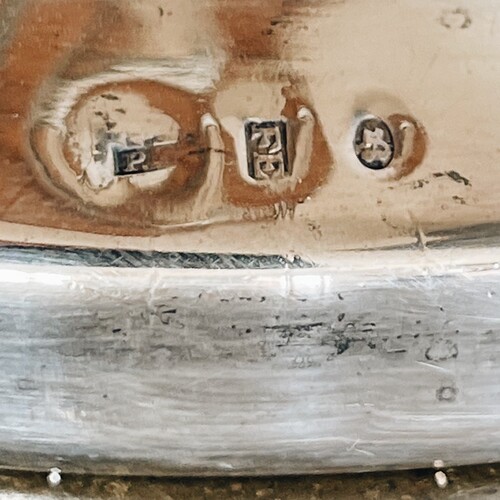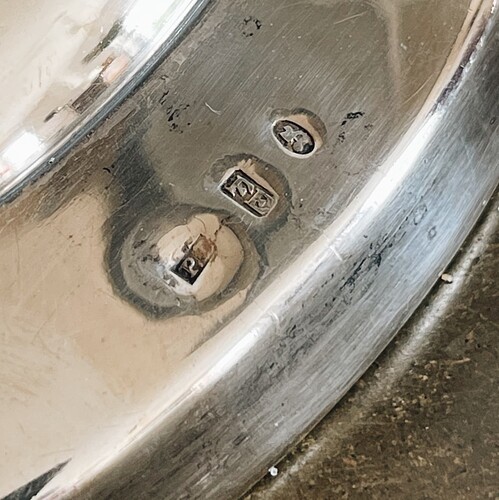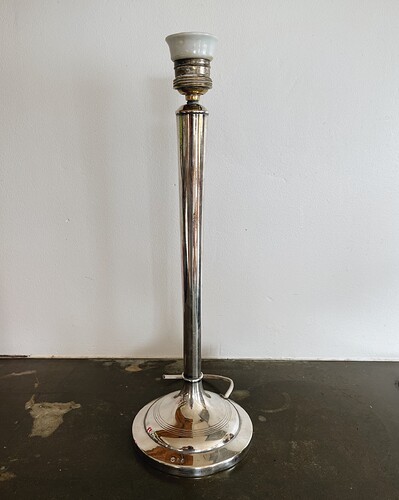Hi all!
I am new to this forum and hoping somebody can help me identify these marks. I’ve been researching these marks for a couple of hours now but can’t seem to make sense of it. The lamp looks like silver, feels like silver, but is it really? The combination of marks, or rather the lack of marks, confuses me. Am very grateful for any guidance.
First stamp appears to be letters ‘P.D’. Because of the lack of other typical sterling silver stamps, I first thought this might indicate palladium, but the dot between the P and the D makes me unsure.
Second stamp is ‘FE’. Probably makers mark, Frederick Elkington perhaps…?
Third stamp, a single old-English ‘S’. Might be Birmingham year stamp for 1893, but is missing other Birmingham stamps, so probably not…
Am very grateful for any help. Thanks in advance!
Sincerely,
Z
Hello, the upper part (the lamp nozzle) is definitely only silver plated.
Hi. Thanks for your input! You’re absolutely right. I’m no professional, but I would assume that is (almost) always the case when dealing with lamp bases in silver.
In general, there are no mixes in pieces with plated parts and solid silver parts, it is either one or the other. If there is no restoration on the lamp, I would say it is all silver plated.
One of probably a pair of purpose-made electric lamp stands designed to look like the Georgian candlesticks of the 18th century. The base metal underlay is visible in your pictures and the marks are that of a plater although I cannot find which on quick look. Someone has rewired it in the last fifty years. The ceramic bulb holder is probably original and, if a bayonet type, then indicates it was manufactured in the UK I cannot date it but most likely early 20th century.
A previous commentator observed sterling and plate don’t usually mix and this is certainly true in this case. However it is a truth often confounded when plate as opposed to electro-plating was first introduced. Warming stands for existing entre dishes were common and of Sheffield plate. Regency sliversmiths ,including the great Paul Storr, picked up on this and the firm he worked for Rundell & Bridge produced plated warmers and silver entree dishes for sale or on order.
The other exception, perhaps more pertinent to this item is the adaptation of late 18th and early 19th century sticks, usually pair into candelabras using both fused metals and electro-plating depending on when done. We have seen a number of these adaptations come out of the Soho Manufactory in Smethwick, West Midlands in the time of both Matthew Boulton and James Watt, Srs and Jrs.
This enabled the sticks to be used either on the sideboard or the table and the branches to be brought out for more elaborate dinners.
In the recently popular Downtown Abbey TV series by Julian Fellowes, “Carson” the butler refers to a dent in the Rundell sticks and how he is sending them to London for repair. TV viewers only had a glancing shot of the candelabras fully assembled and provided for the show by the London Silver Vaults, but I was fairly certain these were pitch-stuffed mixed metal examples.
Christopher Wilson
Guildhall Antiques


